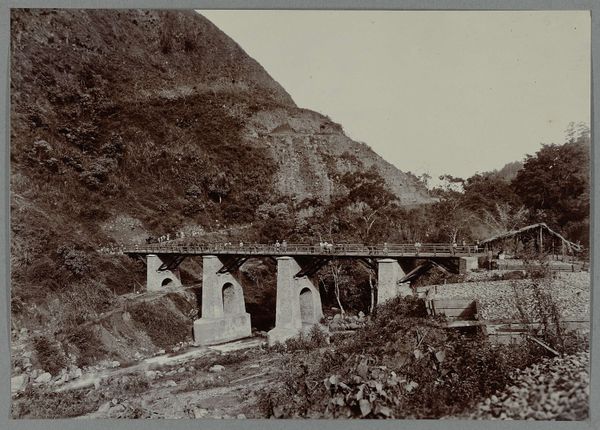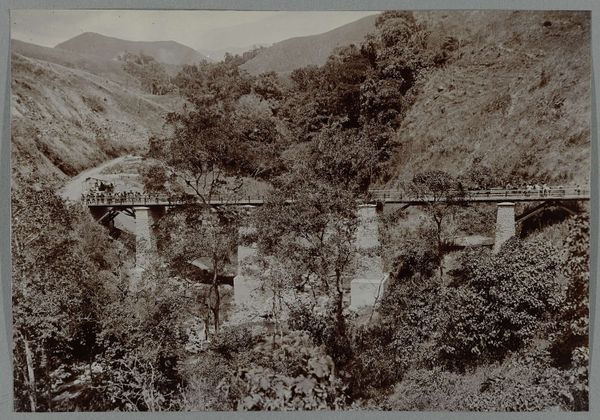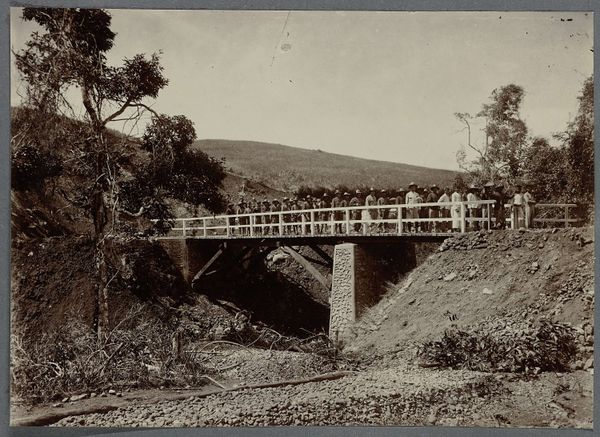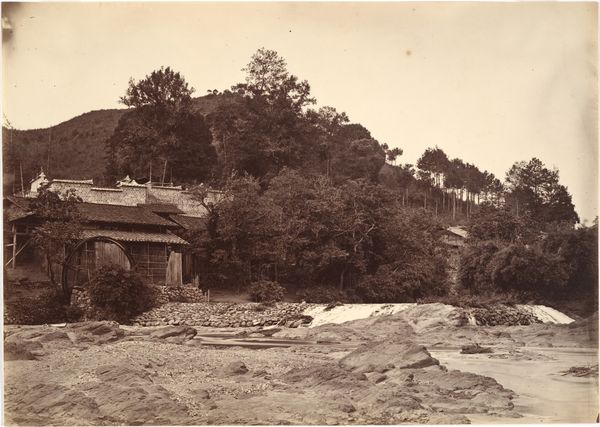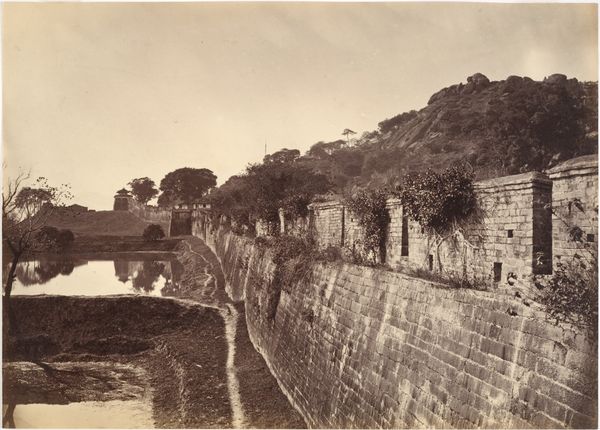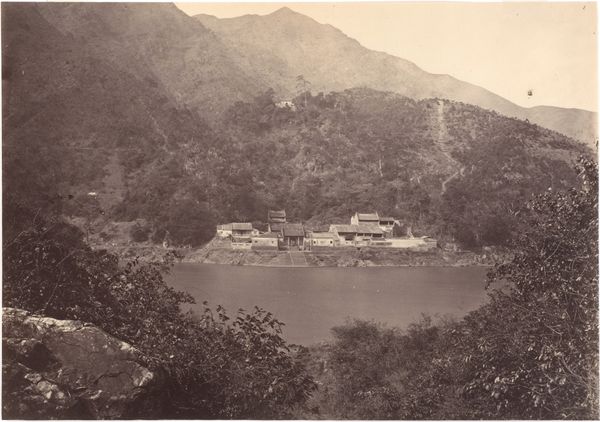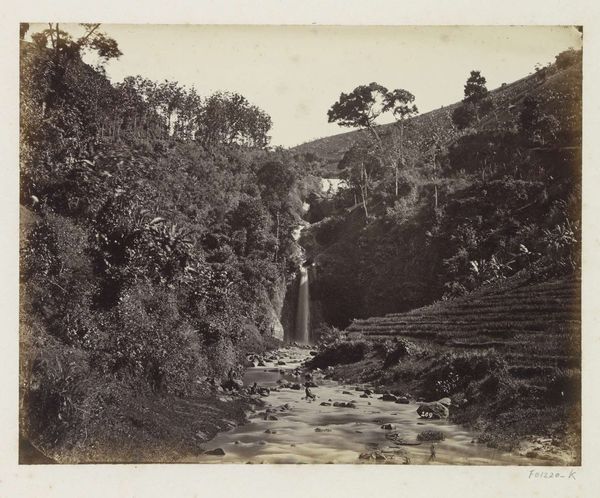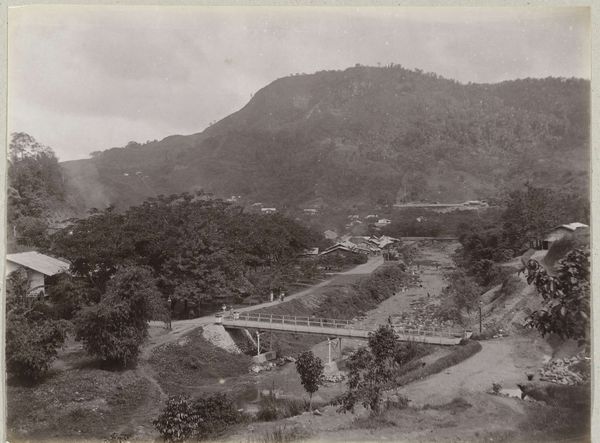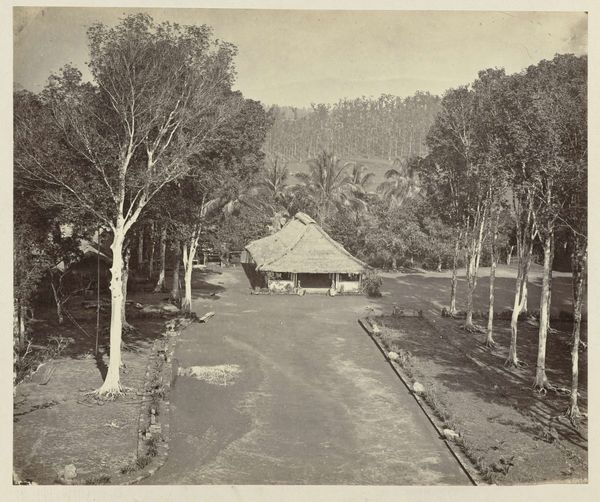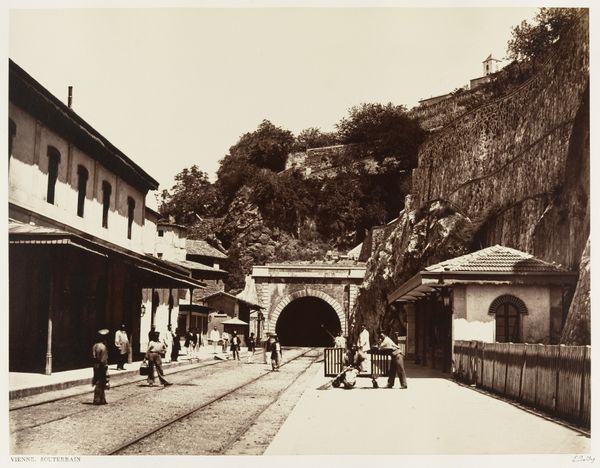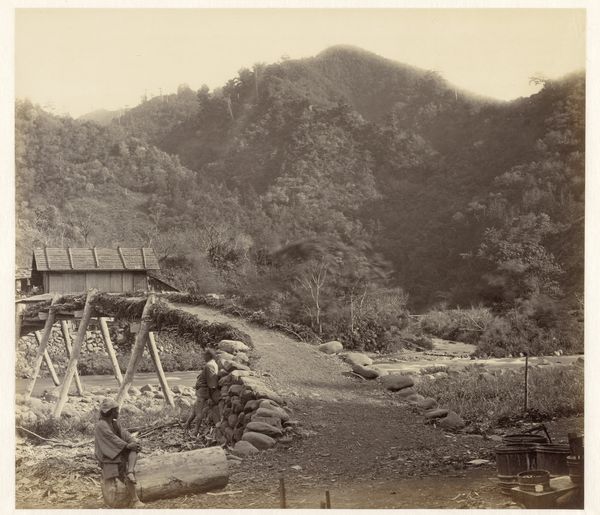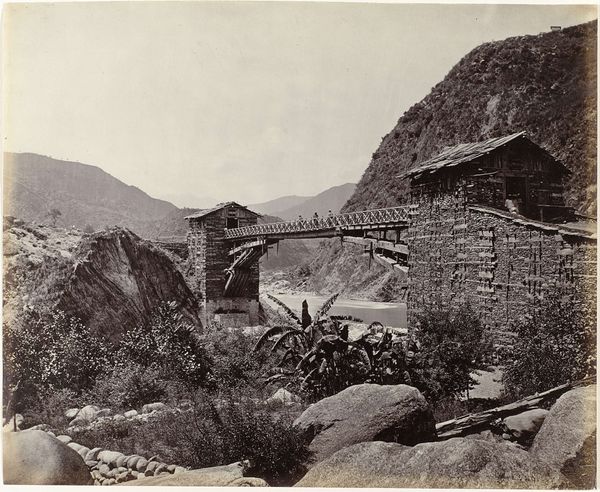
print, photography
# print
#
asian-art
#
landscape
#
outdoor photo
#
outdoor photography
#
photography
#
water
#
outdoor activity
#
cityscape
#
realism
Dimensions: Image: 7 15/16 × 11 1/4 in. (20.2 × 28.5 cm)
Copyright: Public Domain
Curator: What immediately strikes me is the balance achieved within a muted palette. It is calming, somehow. Editor: Today we are looking at a work by Lai Fong, entitled “Chui Nang opposite Kien-yang city,” a photograph created in 1869. The piece is currently held at the Metropolitan Museum of Art. Curator: In thinking about balance and composition, it’s interesting how Fong employs two bridges here. There’s this tension created by the formal stone structure with its clean horizontals, which contrasts sharply against a more primitive one crafted from exposed timbers. This suggests very different building methodologies present at this locale and period. Editor: Indeed, the architectural infrastructure points to both global trade and imperial power dynamics present during the Qing Dynasty, coupled with more local adaptations and ingenuity. These formal stone structures may point to the influence of European engineering and their material exploitation of natural resources on the landscape, for example. Curator: Yes, I can also see how Fong frames that dialogue visually. Take, for instance, how the light renders the textures: it’s all about contrasting those roughly hewn rock faces with the smooth milled lumber, juxtaposing Western industrial refinement with localized construction practices. I’m intrigued by how the bridge physically links the city. It highlights movement between one geographic location to another, hinting at how the human journey reflects not only one’s place but the displacement of persons who traverse space on a constant basis. Editor: In particular, this movement is interesting to consider, given how the photographer Lai Fong, worked as a commercial studio photographer serving mainly a Western clientele interested in seeing "exotic" Asian sites. This landscape may represent their desire for viewing an unspoiled and idealized picture of Chinese society at a pivotal, complex historical moment in global relations and Chinese nationalism. Curator: Interesting—the act of looking back across time certainly alters my understanding of both Fong's work and photographic composition generally. Editor: And for me, revisiting the stark contrasts presented throughout Fong’s “Chui Nang opposite Kien-yang city” gives pause, inciting crucial considerations that shape and determine global viewpoints today.
Comments
No comments
Be the first to comment and join the conversation on the ultimate creative platform.
